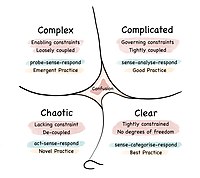
Photo from wikipedia
Heritage management in infrastructure planning is in this paper regarded as a ‘wicked problem’—A multidimensional and unpredictable activity infused with conflicting stakeholder perspectives. By focusing on the West Link and… Click to show full abstract
Heritage management in infrastructure planning is in this paper regarded as a ‘wicked problem’—A multidimensional and unpredictable activity infused with conflicting stakeholder perspectives. By focusing on the West Link and drawing on theoretical notions of strategy-as-practice, the aim is to identify the circumstances in which paradoxes and dilemmas of wicked problems emerge and examine the professional micro-level strategizing applied to navigate and overcome them. The railway construction was deemed to be a threat to the 17th century fortifications, historical parks and former agricultural properties, today located in the city center. The Swedish government appointed representatives from the Swedish Transport Administration and heritage professionals from national, regional and local levels of government to negotiate how best to deal with these challenges. By means of primary data from interviews and workshops with stakeholders, and document- and correspondence analysis, the results showed how three main challenges hampered a fruitful dialogue and outcome: the inherent complexity of the task, different approaches to heritage and lack of adequate coordination within and between the parties. Strategic responses included action plans, delegation of tasks in reference and working groups, the signing of agreements, reorganization and financing of additional personnel. We discuss the main factors underlining the wickedness of heritage management in infrastructure planning as both processual and collaborative, and the implications of this for practice regarding bringing about more operative and sustainable approaches.
Journal Title: Land
Year Published: 2021
Link to full text (if available)
Share on Social Media: Sign Up to like & get
recommendations!